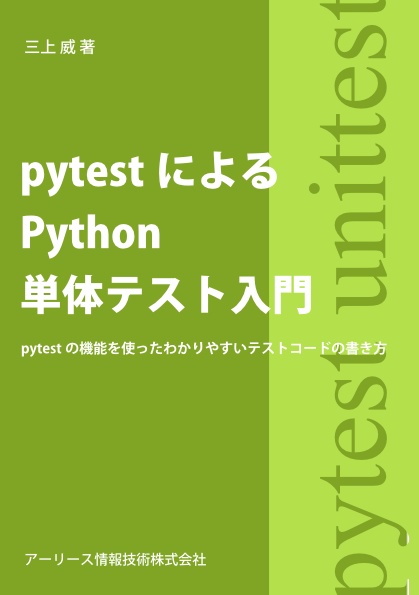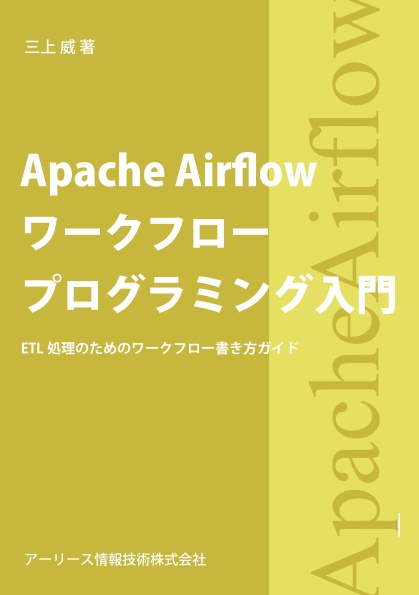hivemallのロジスティック回帰のサンプルを動かすまでの流れ
hivemallのロジスティック回帰のサンプルを動かすまでの流れのメモです。
- Hadoopとhiveのセットアップ
- サンプルのデータセットとhivemallのダウンロード
- サンプル(logistic regression)を動かしてみる
試すサンプル:
https://github.com/myui/hivemall/wiki/a9a-binary-classification-(logistic-regression)
Hadoopとhiveのセットアップ
以下のエントリの「Hadoopとhiveのセットアップ」と同じなので省略。
※MacOSXの場合の手順ですが。
MacにhiveをセットアップしてS3上のファイルにアクセスするまで
http://takemikami.com/2016/03/31/MachiveS3.html
サンプルのデータセットとhivemallのダウンロード
hivemallのダウンロード
以下のURLからhivemallのjarをダウンロードします。
URL: https://github.com/myui/hivemall/releases
ファイル: hivemall-0.3.2-3-with-dependencies.jar;
※0.4系だとうまく動かなかったので、ここでは0.3系で試します。
サンプルデータセットをダウンロード
以下のURLからサンプルデータセットをダウンロードします。
URL: http://www.csie.ntu.edu.tw/~cjlin/libsvmtools/datasets/binary.html#a9a
ファイル:
- a9a
- a9a.t
データセットについてはここに説明があります。
http://www.csie.ntu.edu.tw/~cjlin/libsvmtools/datasets/
サンプル(logistic regression)を動かしてみる
以下のURLの説明に従って、logistic regressionのサンプルを動かしてみます。
URL: https://github.com/myui/hivemall/wiki/a9a-binary-classification-(logistic-regression)
データセットをテーブルにロード
以下のようにして、サンプルデータセットをa9atrainとa9atestにロードします。 ダウンロードしたサンプルデータセットは/tmpにあるものとします。
a9atrain
hive> create table a9atrain_original(text string);
hive> load data local inpath '/tmp/a9a' into table a9atrain_original;
hive> create table a9atrain as select
regexp_replace(reflect('java.util.UUID','randomUUID'), '-', '') rowid,
case when substr(text,1,2) >0 then 1 else 0 end label,
split(trim(substr(text,4)),' ') features
from a9atrain_original;
hive> drop table a9atrain_original;
a9atest
hive> create table a9atest_original(text string);
hive> load data local inpath '/tmp/a9a.t' into table a9atest_original;
hive> create table a9atest as select
regexp_replace(reflect('java.util.UUID','randomUUID'), '-', '') rowid,
case when substr(text,1,2) >0 then 1 else 0 end label,
split(trim(substr(text,4)),' ') features
from a9atest_original;
hive> drop table a9atest_original;
取り込んだデータセットをhiveでselectして見てみます。
hive> select * from a9atrain limit 5;
4fd4b9e9b46a4638b59ccf5122c062f7 0 ["3:1","11:1","14:1","19:1","39:1","42:1","55:1","64:1","67:1","73:1","75:1","76:1","80:1","83:1"]
da1230820aa744d690898c8b42fc03c0 0 ["5:1","7:1","14:1","19:1","39:1","40:1","51:1","63:1","67:1","73:1","74:1","76:1","78:1","83:1"]
f85b1daf18534c2982d88c587b854458 0 ["3:1","6:1","17:1","22:1","36:1","41:1","53:1","64:1","67:1","73:1","74:1","76:1","80:1","83:1"]
b59be913a0024a289d63c0e794b9c3c9 0 ["5:1","6:1","17:1","21:1","35:1","40:1","53:1","63:1","71:1","73:1","74:1","76:1","80:1","83:1"]
b7ff8b9f38ae4d889739a1d1f8721cd1 0 ["2:1","6:1","18:1","19:1","39:1","40:1","52:1","61:1","71:1","72:1","74:1","76:1","80:1","95:1"]
データセットは以下の列で構成されています。
- 1列目: rowid レコード毎のユニークID
- 2列目: label ラベル 推定したい値(0 or 1)
- 3列目: features 特徴量の配列 (特徴量ID:特徴量の値の組)
データセットのレコード件数をチェック
以下のように、データセットのレコード件数を調べパラメータに設定します。
> select count(1) from a9atrain;
> set hivevar:total_steps=32561;
> select count(1) from a9atest;
> set hivevar:num_test_instances=16281;
トレーニングデータからモデルを作成する(training)
以下のようにして、hivemallのUDFを設定します。
※ダウンロードしたjarファイルは/tmpにあるものとします。
hive> add jar /tmp/hivemall-0.3.2-3-with-dependencies.jar;
hive> create temporary function addBias as 'hivemall.ftvec.AddBiasUDF';
hive> create temporary function logress as 'hivemall.regression.LogressUDTF';
以下のクエリで学習させます。
hive> create table a9a_model1
as
select
cast(feature as int) as feature,
avg(weight) as weight
from
(select
logress(addBias(features),label,"-total_steps ${total_steps}") as (feature,weight)
from
a9atrain
) t
group by feature;
作成したモデルをhiveでselectして見てみます。
hive> select * from a9a_model1 limit 5;
0 -0.5761121511459351
1 -1.5259535312652588
10 0.21053194999694824
100 -0.017715860158205032
101 0.007558753248304129
モデルのテーブルは以下の列で構成されています。
- 1列目: feature 特徴量のID
- 2列目: weight 特徴量の重み(係数)
テストデータに対して予測を行う (prediction)
以下のようにして、hivemallのUDFを設定します。
※ダウンロードしたjarファイルは/tmpにあるものとします。
hive> create temporary function extract_feature as 'hivemall.ftvec.ExtractFeatureUDF';
hive> create temporary function extract_weight as 'hivemall.ftvec.ExtractWeightUDF';
hive> create temporary function sigmoid as 'hivemall.tools.math.SigmodUDF';
以下のクエリで予測します。
hive> create or replace view a9a_predict1
as
WITH a9atest_exploded as (
select
rowid,
label,
extract_feature(feature) as feature,
extract_weight(feature) as value
from
a9atest LATERAL VIEW explode(addBias(features)) t AS feature
)
select
t.rowid,
sigmoid(sum(m.weight * t.value)) as prob,
CAST((case when sigmoid(sum(m.weight * t.value)) >= 0.5 then 1.0 else 0.0 end) as FLOAT) as label
from
a9atest_exploded t LEFT OUTER JOIN
a9a_model1 m ON (t.feature = m.feature)
group by
t.rowid;
予測した結果をhiveでselectして見てみます。
hive> select * from a9a_predict1 limit 5;
0000c75d50fc4db093ee0aa663d19266 0.45304257 0.0
00033d759e20486887ae50639fcd03c0 0.17149617 0.0
000592244c6a4e669f5fcaf394e55807 0.068347506 0.0
000cfdad24f241ffbef9d2ece5a909a2 0.4040777 0.0
00198661df1c43c79bfcb4c879b0e82b 0.048144594 0.0
予測結果は以下の列で構成されています。
- 1列目: rowid レコード毎のユニークID
- 2列目: prob 確率
- 3列目: label ラベル 推定した値(0 or 1)
予測結果の評価
以下のクエリで、予測結果を評価します。 予測した値が正しかった割合を計算しています。
hive> create or replace view a9a_submit1 as
select
t.label as actual,
pd.label as predicted,
pd.prob as probability
from
a9atest t JOIN a9a_predict1 pd
on (t.rowid = pd.rowid);
hive> select count(1) / ${num_test_instances} from a9a_submit1
where actual == predicted;
0.8430071862907684
以上、チュートリアルをなぞっただけですが。。






